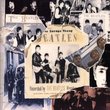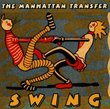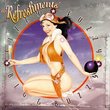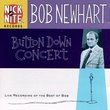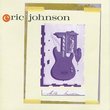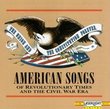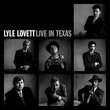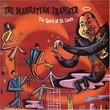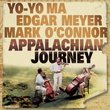| All Artists: George Gershwin Title: From Gershwin's Time: The Original Sounds Of George Gershwin 1920-1945 Members Wishing: 0 Total Copies: 0 Label: Sony Original Release Date: 11/24/1998 Release Date: 11/24/1998 Album Type: Original recording remastered Genres: Folk, Jazz, Special Interest, Pop, Soundtracks, Classical, Classic Rock, Broadway & Vocalists Styles: Traditional Folk, Swing Jazz, Traditional Jazz & Ragtime, Vocal Jazz, Comedy & Spoken Word, Nostalgia, Easy Listening, Oldies, Vocal Pop, Historical Periods, Early Music, Musicals, Traditional Vocal Pop Number of Discs: 2 SwapaCD Credits: 2 UPC: 074646064825 |
Search - George Gershwin :: From Gershwin's Time: The Original Sounds Of George Gershwin 1920-1945
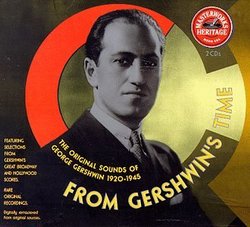 | George Gershwin From Gershwin's Time: The Original Sounds Of George Gershwin 1920-1945 Genres: Folk, Jazz, Special Interest, Pop, Soundtracks, Classical, Classic Rock, Broadway & Vocalists
Problem with listening to Gershwin tunes these days: all we ever hear is the new interpreters, the crooners who always boast a thick sheen of polish. Of course, there was a time--back before jazz became "smooth" and airlin... more » |
Larger Image |
CD DetailsSynopsis
Amazon.com essential recording Problem with listening to Gershwin tunes these days: all we ever hear is the new interpreters, the crooners who always boast a thick sheen of polish. Of course, there was a time--back before jazz became "smooth" and airline commercials picked up on "Rhapsody in Blue"--when Gershwin's tunes were pop music. You know, fun songs heard everywhere--in the concert halls, at the movies, on the radio--by young and old alike. These tunes comprise From Gershwin's Time, a collection of music recorded (mostly) while the composer was still alive, between 1920 and 1945 (George died in '37). Vintage Gershwin cuts by Al Jolson, Ukulele Ike, Fred Astaire, and Tom Patricola (from the original George White's Sandals Broadway cast) are interspersed with more novel acts: the Singing Sophomores, the Ipana Troubadours, and Borah Minnevitch & His Harmonica Rascals. The second CD features several tracks of Gershwin's own piano work, but it's the oddballs that make this disc so special. Of all the Gershwin compilations out there, none are so varied in performers and scope--from Broadway tunes to Rhapsody--nor are any this fun. A must-have for Gershwin fans. --Jason Verlinde Similarly Requested CDs
|
CD ReviewsGreat Gershwin James Shiver | Lakeland, FL United States | 06/27/2000 (5 out of 5 stars) "For someone who is looking for a Gershwin collection that contains something other than the usual pieces, this CD is sure to please. Here is a generous collection of original recordings dating back to Al Jolson's 1919 rendition of Swanee. There are dozens of other recordings from the 1920's and 30's. Most are of Gershwin's Broadway songs. The 2-CD set also includes Gershwin himself playing, among other pieces, the Andante from Rhapsody in Blue and the Three Preludes. Robert Russell Bennett's Porgy and Bess-A Symphonic Picture is here in the 1945 world-premier recording by Fritz Reiner and the Pittsburgh Symphony Orchestra. Overall, this is an outstanding bargain for anyone who loves Gershwin." S'wonderful Gene DeSantis | Philadelphia, PA United States | 12/05/2002 (5 out of 5 stars) "If there's an argument against public-domain CDs, it's the gem of this set, the Porgy and Bess Symphonic Picture led by Fritz Reiner. A cursory Web search reveals this was issued twice before on CD, once on a label called Dante, and no doubt like many public-domain albums it came off worn 78s of poor sound quality. If one played this as part of a blind listening test people couldn't tell when it was recorded. The mono might give it away as pre-1960 -- or might not. This is a true high-fidelity rendering, with the sparkling unbelievable acoustics of Pittsburgh's late lamented Syria Mosque -- and it was made in March of 1945, during the long sonically dead era before LPs and magnetic tape. Very careful listening would reveal a touch of acetate surface noise, but otherwise this powerful performance of Robert Russell Bennett's inspired suite sounds almost newly minted -- as in a sense it is. Remember the engineer's name: Andreas Meyer. A heartfelt thank you.As for the rest of this tremendous historic document, while it is not quite up to the sonic standard of the Reiner, having been taken largely from commercial pressings (the Gershwin solos are disappointingly noisy by comparison), it has many wonderful moments, like the Columbia Light Opera Company's "Oh, Kay!" medley, a real charmer. (When the Smithsonian issued an album of the show's songs it used only the opening, repeated -- not a smart thing.) Or Cliff "Ukelele Ike" Edwards's "Fascinating Rhythm"; he deserves to be known as much more than the alter ego of Jiminy Cricket. Or the great Kate Smith's "I Got Rhythm," which might have inspired the Schnozz himself to rasp, "What a voice! What a voice!" Or the incredibly sexy Vaughn De Leath, whose name first led me to think, this is a man? I do not know what to say of Borah Minnevitch's utterly screwy arrangement of the Rhapsody in Blue -- for harmonica; but this set would be the lesser without it. One might quibble with what's missing -- where's the Paul Whiteman Rhapsody? Where's Gertrude Lawrence? (Alas, those recordings were for Victor, and the current set is limited to the labels associated with Sony Music and its predecessors.) Still, though not the definitive Gershwin -- there are too many good albums for that -- it is A definitive one, with a big A. Small quibbles: the discs are hard to pry from the cardboard holder, which comes with an inconvenient plastic slipcover; and we could have used more liner notes in English.A footnote: The unjustly forgotten Tom Stacks is here -- which brings up another bad public-domain album: Back in the eighties some deaf engineer enticed Australian Broadcasting's record label to put out a whole slew of "digital stereo" albums of pre-war pop music. You knew you were in the golden age of "electronically simulated to re-create stereo" when you put on the headphones and heard an effect not unlike the way your ears can clog up during a cold. Stacks (performing the deathless "I Do Not Choose to Run" with the Six Jumping Jacks) was one of the victims. DO NOT BUY PUBLIC-DOMAIN CDS unless the artist isn't otherwise anthologized.Another footnote: Of course, the public-domain labels aren't the only ones to abuse the music. They got a lot of training from the majors. Some time ago Columbia (for example) issued a two-CD anthology of Fred Astaire (he's represented with "A Foggy Day [in London Town]"), and some -- my original, unprofane noun was replaced by a computer or functionary, with a NON-SEXIST WORD to boot, so let's just say someone with tin ears -- for one of the stereo magazines called the mastering "wonderful." I bought it and it sounded like Osama cutting a track on the telephone. Fred sounds great here. The fact that digital audio has advanced so much in the last two decades is no excuse.Another, and final, footnote, for jazz buffs only: Ben Selvin's "Oh Gee! Oh Joy!" sounds suspiciously like an acoustical version recorded on the same day for Columbia's budget sister label Harmony by an orchestra led by the journeyman musician Lou Raderman -- an orchestra believed to have included Bix Beiderbecke. (See Columbia CK 46175, "Bix Beiderbecke, Volume 2: At the Jazz Band Ball.")"
|

 Track Listings (25) - Disc #1
Track Listings (25) - Disc #1